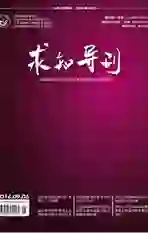基于输入输出交互理论的高中英语读写课
2016-10-17刘雅
刘雅
摘 要:输入和输出理论是二语习得的重要理论,对二语习得有举足轻重的指导意义,对高中英语写作教学也有所启示。输入输出交互式理论为写作教学研究提供了实践研究的重要依据。
关键词:输入输出;交互式理论;英语写作教学
中图分类号:H319 文献标识码:B 收稿日期:2016-04-27
作者简介:刘 雅(1986—),女,四川绵阳人,本科,四川省绵阳中学教师,研究方向:英语教学。
英语写作能力是学生英语思维能力和语言综合应用表达能力的重要体现,也是衡量教学效果的重要标准之一。随着新课改在全国范围内的推进,学生写作能力和教师教学水平都需要上升到一个全新的层次,以应对逐步深入的课改所带来的变化。因此,加大理论研究力度、把理论应用于课堂实践就显得尤为重要。
一、输入输出假说与交互式教学法
1. 输入假说与输出假说
语言的输入不应该是教师对学生“填鸭式”的灌输,而应该是以学生为主体的主动输入。根据Krashen的输入假说我们可以知道,对学生进行比他目前水平略高一点的“可理解的语言输入”(comprehensible input),并且学生能够理解其意义,能够获得信息,这样的教学才能使学生有所得,才是有效的。同时,对学生进行的可理解的语言输入要有趣味性和关联性的特点:英语写作任务贴近学生生活,满足学生日常所需,学生有兴趣、关心的话题,自然就能够掌握得更好。
同时,英语写作的输出也是评判教学是否有效的重要标志,尽管有了有效的可理解输入,如果学生无法运用所学知识输出一篇优秀的文章,那么写作教学仍然是不成功的。所以,Swain提出的输出假说也很值得研究和思考。Swain的研究发现,尽管学生长时间处于浸入式教学的环境中,拥有大量的目标语言的输入,其说写能力依然较弱,由此提出“可理解的语言输出”(comprehensible output)和“可理解的语言输入”同等重要。
2. 交互式教学法
既然输入理论和输出理论都在外语学习中有重要作用,那么我们可以尝试把二者结合起来,就产生了输入输出交互式教学法。对学生进行可理解的输入,使其获取一定量的有效信息,再通过教师在语言准确性和恰当与否方面的指导,从而形成可理解的输出,促使学生利用目标语言(target language)即英语的词汇和表达写出文章。如若不能表达,那么学生也会意识到自己目标语言学习中存在的问题。
二、基于输入输出交互理论的读写课设计
1.写作任务
The following is one page from Henrys dairy. Please read it first.
Thursday, April 14, 2016
rainy/ sunny
I have to admit that I had been quite mad at Li Hua the whole morning. We had made an appointment to meet at the Xinhua Bookstore at 7:00 pm yesterday, but he didnt show up! I stood at the entrance like a fool for AN HOUR, waiting for him and wondering if something terrible had happened to him. I tried to reach him through cell phone, but “Sorry, the subscriber you dialed is busy” was all I got.
Today, at lunch time, he came to me to explain the whole thing. Well, what can I say? He did have good reasons for not keeping the appointment. His mother worked overtime; he had to look after his 5-year-old sister; his cell phone was broken; he didnt remember my number (by the way, I think we all have this problem, becoming too dependent on our phone instead of our brain).
I guess were cool now. Friends are supposed to understand and forgive each other, right?
Now, lets pretend youre Li Hua. Please write a sorry letter to Henry according what you have read just now.
2.任务分析
在生活中,好朋友之间难免发生摩擦误会,如何消除误会、重拾友谊是每个学生都应该具备的重要人际交往沟通能力,这样的事情也极有可能发生在每个学生身上。由此可见,该写作任务与学生生活息息相关,也是学生感兴趣、想知道的话题。
显而易见,Henry的日记就是重要的输入材料,通过仔细阅读日记内容,我们就会发现有些信息可用,有些信息无用。教师可以通过提出以下一系列问题来帮助学生对日记内容进行理解。
Why was Henry mad?
When and where did they agree to meet?
What kept Li Hua from meeting Henry?
回答完以上三个问题,再指导学生转化成李华的视角,思考下列问题。
What should I apologize for?
Why didnt I make it yesterday?
弄清这两个问题,写一封道歉信就比较容易了。
3.输出成果
学生A
Dear Henry,
Im really sorry that I was absent from our appointment.
Around 6pm, I had intended to leave for the bookstore. But my mother had to work longer than usual. As a result, I must stay at home to take care of my little sister. Worse still, I had planned to tell you about my situation. However, I forgot your cell phone number and my phone is broken. Thus, I couldnt get in touch with you.
Sorry again for my absence if there was any inconvenience caused by me. Lets make it another time. I hope you can forgive me.
Best wishes.
Yours,
Li HuaYours,
Li Hua
学生B
Dear Henry,
I feel terribly sorry that I couldnt make it to meet you at the entrance of Xinhua Bookstore at 7 p.m. last night.
I had to take the responsibility to babysit my little sister for my mom needed to work overtime without any advance notifications. I intended to inform you but with no success because there was something wrong with my phone and I couldnt remember your phone number without mine. Thats why I didnt contact you in time.
I figured that if you noticed my absence, you would go back home instead of waiting. I feel really guilty about leaving you there waiting for such a long time. But I promise that things like this wont happen ever again.
With kind regards.
Yours Sincerely,
Li Hua
英语写作是学生展现所学的重要输出手段,也是学生普遍觉得难度较大的一个部分。没有有效的输入,就不会有有效的输出。写作教学是英语教学的重点,传统的教授方法和单纯侧重输入或输出都不能完全满足新课改对学生的要求,因此,输入输出交互理论对英语写作教学有重要指导意义,通过结合输入假说和输出假说,可以有效提高英语作文教学的效率和水平。
参考文献:
[1]王 静.输入理论在高中英语写作教学策略中的应用[J].学周刊, 2015(9).
[2]赵 朝.克拉申的输入假说和英语教学[J].高考(综合版),2016(1).
[3]王笃勤.英语教学策略论[M].北京:外语教学与研究出版社,2006.
